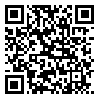
International Journal of Industrial Engineering & Production Research
Iran University of Science & Technology
Wed, Oct 29, 2025
[Archive]
Volume 24, Issue 3 (IJIEPR 2013)
IJIEPR 2013, 24(3): 217-227 |
Back to browse issues page
Download citation:
BibTeX | RIS | EndNote | Medlars | ProCite | Reference Manager | RefWorks
Send citation to:



BibTeX | RIS | EndNote | Medlars | ProCite | Reference Manager | RefWorks
Send citation to:
Bagherinejad J, Omidbakhsh M. Approximation Methods for Solving the Equitable Location Problem with Probabilistic Customer Behavior. IJIEPR 2013; 24 (3) :217-227
URL: http://ijiepr.iust.ac.ir/article-1-396-en.html
URL: http://ijiepr.iust.ac.ir/article-1-396-en.html
1- University of Alzahra , jbagheri@Alzahra.ac.ir
2- Alzahra Univ
2- Alzahra Univ
Abstract: (9553 Views)
Location-allocation of facilities in service systems is an essential factor of their performance. One of the considerable situations which less addressed in the relevant literature is to balance service among customers in addition to minimize location-allocation costs. This is an important issue, especially in the public sector. Reviewing the recent researches in this field shows that most of them allocated demand customer to the closest facility. While, using probability rules to predict customer behavior when they select the desired facility is more appropriate. In this research, equitable facility location problem based on the gravity rule was investigated. The objective function has been defined as a combination of balancing and cost minimization, keeping in mind some system constraints. To estimate demand volume among facilities, utility function(attraction function) added to model as one constraint. The research problem is modeled as one mixed integer linear programming. Due to the model complexity, two heuristic and genetic algorithms have been developed and compared by exact solutions of small dimension problems. The results of numerical examples show the heuristic approach effectiveness with good-quality solutions in reasonable run time.
Keywords: Facility location, Equitable load, Gravity model, Heuristic algorithm, Genetic algorithm, Integer programming
Type of Study: Research |
Subject:
Facilities Planning and Management
Received: 2012/01/29 | Accepted: 2013/09/28 | Published: 2013/09/28
Received: 2012/01/29 | Accepted: 2013/09/28 | Published: 2013/09/28
Send email to the article author
| Rights and permissions | |
 | This work is licensed under a Creative Commons Attribution-NonCommercial 4.0 International License. |



